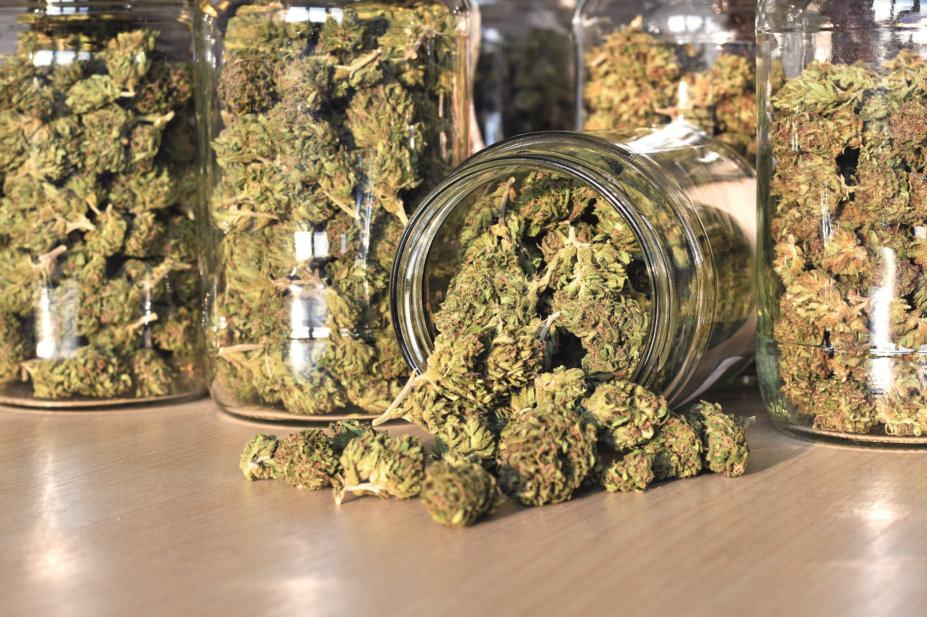
Shutterstock.com
Medical cannabis has been available in Canada since 2001. Cannabis supply started through a highly restrictive programme, in which only a handful of patients initially qualified. In 2014, the government changed the law regarding the distribution of medical cannabis to allow any physician to prescribe cannabis for any indication. This led to a rapid growth in medical cannabis use with over 269,000 Canadians using medical cannabis in December 2017. And the number of cannabis users is likely to continue to increase as, in 2018, Canada became the first G7 nation to legalise recreational cannabis use.
Never in my 25 years as a pharmacist have I seen an issue as polarising as medical cannabis. When I started working in the cannabis space, the vast majority of healthcare professionals thought it was a farce and vowed to never authorise it for any patient. The public was also very sceptical of the role of medical cannabis, and thought that most users would be using medical cannabis solely for recreational use. I remember presenting on medical cannabis at conferences, and when I asked who was in favour of or opposed to medical cannabis, less than 10% of healthcare professionals favoured its role. At that time, both our national physician and pharmacist organisations lobbied the government against the prescribing and dispensing of cannabis. With such negative lobbying from pharmacy organisations, the government allowed the distribution of medical cannabis to occur through mail-order directly from the licensed cannabis producer.
I strongly encourage all pharmacists to learn as much as they possibly can about cannabis
Public opinion has dramatically changed in favour of medical cannabis. I have presented to patient groups across my province and 80–90% of my audience members are in favour of a strong system for medical cannabis. My patient audience groups are not 20–30-year-olds advocating for cannabis; most are 65 years and older, and want help managing their chronic pain.
What UK pharmacists can learn from our experience
Looking back, there are several things that I wish pharmacists had done differently. I would strongly encourage all UK pharmacy organisations and pharmacists to learn as much as they possibly can about cannabis and its role in the management of chronic medical conditions. A good starting point is
The Health Effects of Cannabis and Cannabinoids
, published in January 2017, which provides an excellent summary of the state of the current evidence on the efficacy and safety of medical cannabis.
I would recommend pharmacists and their organisations to start advocating on the importance of the role of the pharmacist in educating, counselling and dispensing medical cannabis to patients. When our pharmacy organisations opposed medical cannabis, the government cut pharmacists out of its distribution, and Canadian pharmacists play a negligible role in medical cannabis as a result.
I would start engaging your patients in a discussion on cannabis. I can tell you from experience, patients are not going to wait until a medical system is in place. I was surprised to find out how many people are using it and the level of relief they are getting from it. Although patients and online sites will claim it can cure almost any condition, the evidence best supports cannabis for:
- Managing neuropathic pain;
- Multiple sclerosis spasticity;
- Chemotherapy-induced nausea and vomiting;
- Treatment-resistant epilepsy.
I would recommend that pharmacists and their organisations start discussing medical cannabis with patient advocacy groups. Organisations such as the Canadian Arthritis Society are supporting the role of medical cannabis to help their members. Working with these groups, pharmacists can demonstrate their importance as key counsellors and educators on the efficacy and safety of this new treatment option.
Lastly, I would recommend that pharmacists start to think of cannabis as similar to but different from any other medication they have ever seen. There are hundreds of strains of medical cannabis in Canada, each of which lead to slightly different responses. There will never be an SPC for cannabis use, so there are many unknowns regarding efficacy, safety, drug interactions, dosing, monitoring, methods of administration and contraindications. You must be comfortable with addressing patient concerns and questions, even when you may not have a perfect answer.
I have been educating pharmacists and healthcare professionals in Canada and around the world on the role of medical cannabis since 2013. I see this shifting tide of public support for medical cannabis over the last few years. Pharmacists in the UK can either embrace its potential place in therapy and advocate for their role, or, like in Canada, if a medical cannabis system is approved in the UK, be left out in the cold.
Michael Boivin, pharmacist consultant, CommPharm Consulting Inc., Canada
You may also be interested in
The importance of diverse clinical imagery within health education

Government should consider ways to prevent ‘inappropriate overseas prescribing’ of hormone drugs, review recommends
